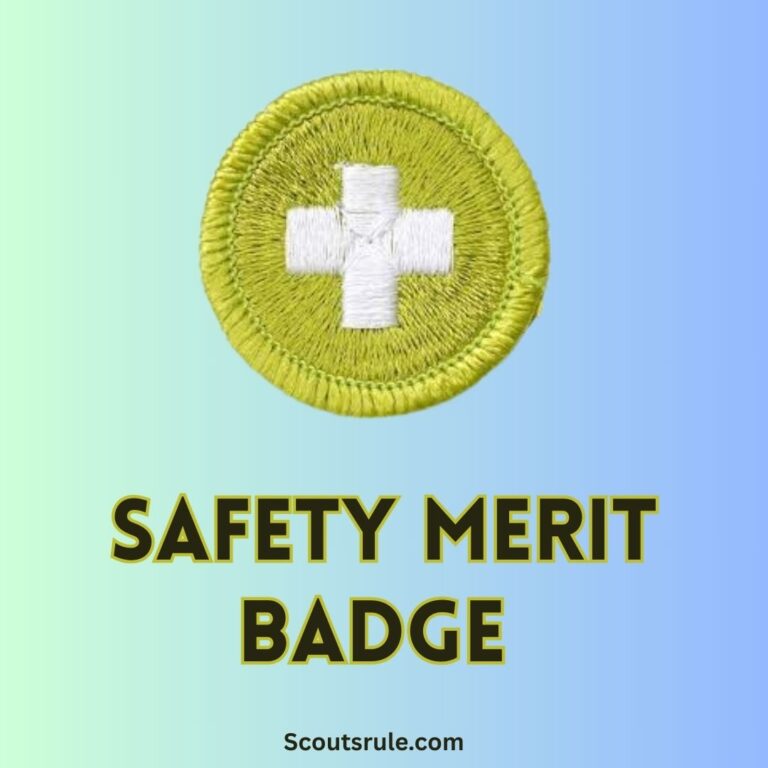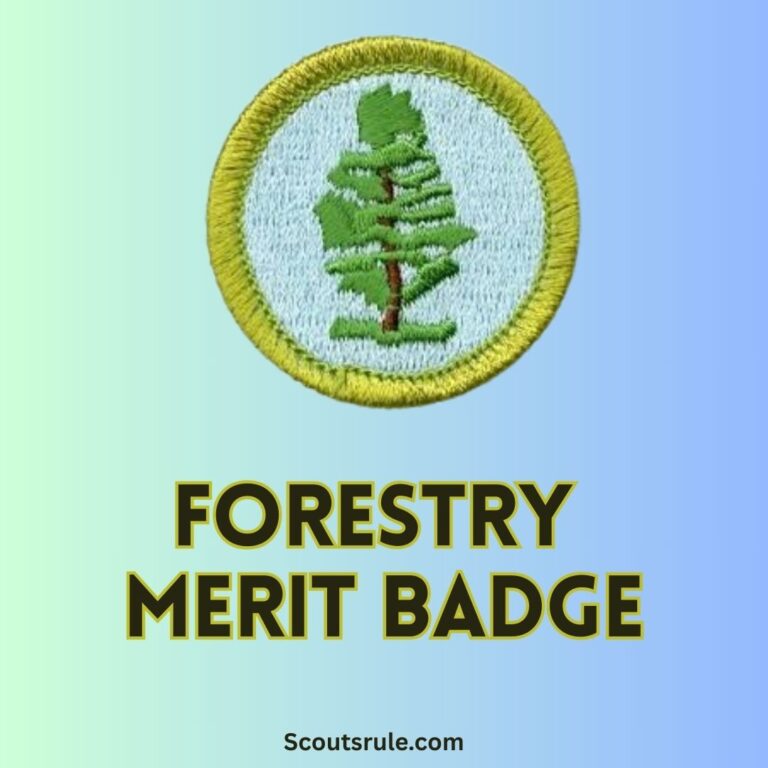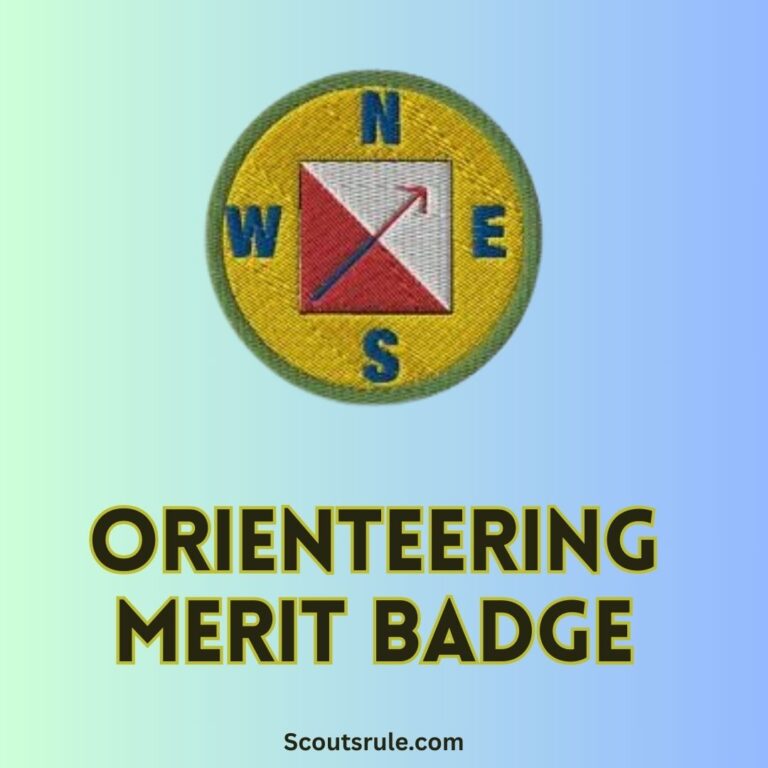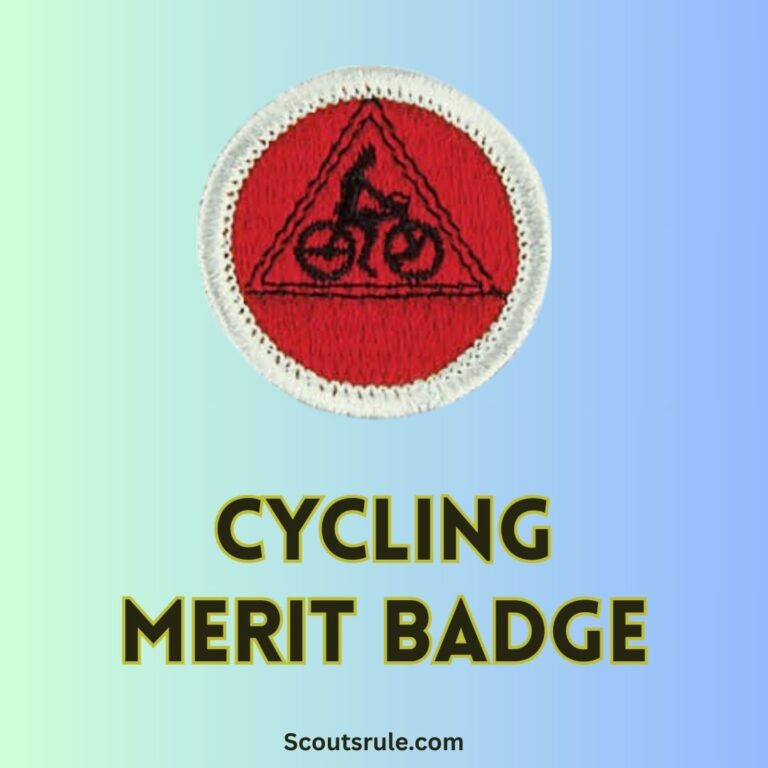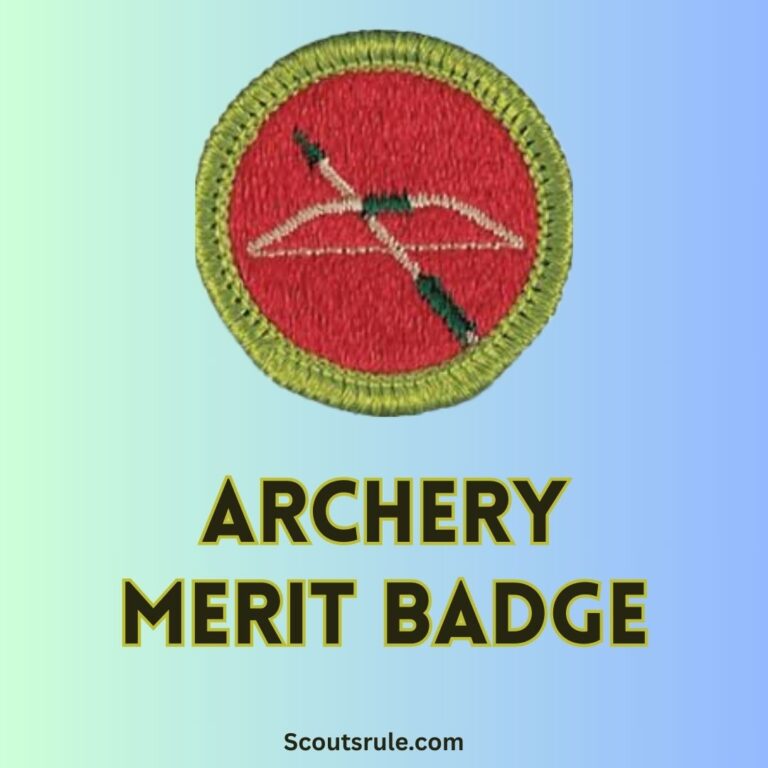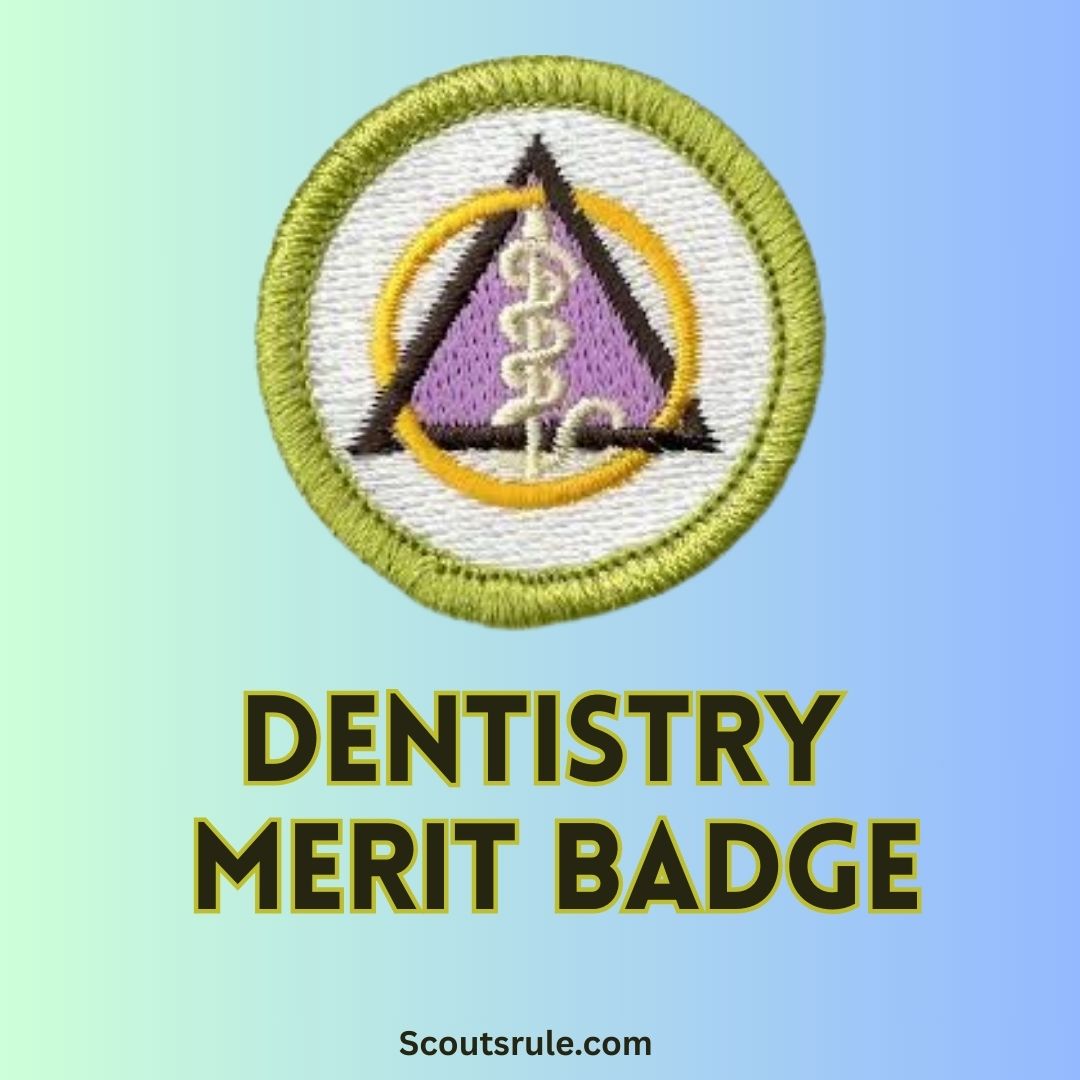
Oral health is a critical component of overall well-being. Dentists play an essential role in ensuring that our teeth and gums remain healthy, which in turn affects our speech, appearance, and even general physical health. The Dentistry Merit Badge introduces Scouts to the fascinating world of dental care, helping them understand preventive measures, dental procedures, and the roles that dental professionals play in maintaining public health. Whether you plan to pursue dentistry as a career or simply want to improve your personal dental care, this merit badge will provide you with the information and hands-on experiences needed to succeed.
Post Contents
- 2. Overview of the Dentistry Merit Badge
- 3. Understanding Dental Anatomy Through X-Rays
- 4. Causes and Prevention: Dental Decay and Gum Disease
- 5. Dental Check-Ups and First-Aid for Dental Emergencies
- 6. Exploring Dental Instruments and Equipment
- 7. Diet and Oral Health: Keeping Records and Making Healthy Choices
- 8. Exploring Careers in Dentistry
- Conclusion: Building a Lifetime of Healthy Smiles
2. Overview of the Dentistry Merit Badge
The Dentistry Merit Badge is designed as an educational program that covers a variety of topics, including:
- Oral Anatomy and Radiographic Analysis: You will study dental x-rays to understand tooth structure and the signs of decay.
- Dental Decay and Gum Disease: Learn about the causes of decay and the practices used to prevent and control gum disease.
- Dental Examination and Preventive Care: Understand what happens during a dental checkup and learn basic first-aid measures for dental emergencies.
- Dental Instruments and Procedures: Familiarize yourself with the tools and equipment used by dentists and, with guidance, prepare a dental stone cast.
- Diet and Oral Health: Analyze your eating habits for their impact on dental health.
- Careers in Dentistry: Research the various career opportunities within the field of dentistry.
Each of these areas not only enhances your personal health but also gives you a taste of the responsibilities and skills required in dental professions.
3. Understanding Dental Anatomy Through X-Rays
One of the primary requirements of the Dentistry Merit Badge involves studying tooth structure using radiographic films (x-rays). Through this exercise, you gain a detailed view of what lies beneath the surface of a tooth, including bone, gum tissues, nerves, blood vessels, and areas prone to decay.
3.1 Examining Tooth Structure
X-rays allow you to see the internal structure of teeth. When you study a radiograph:
- Enamel and Dentin: Note the dense, highly mineralized outer layer called the enamel, and the underlying dentin that makes up the bulk of the tooth.
- Pulp Chamber: Identify the central pulp chamber where blood vessels and nerves reside.
- Supporting Bone and Gum Tissues: Observe how the bone supports the tooth and how the gum tissues surround it.
- Decay Indicators: Look for darkened areas that indicate the presence of decay. These may be seen along the margins of the tooth or near the tips of the roots.
3.2 Drawing and Labeling a Lower Molar
Using the radiographs as a guide, you are required to draw a lower molar. As you create your drawing:
- Label Major Parts: Include labels for the enamel, dentin, pulp chamber, and roots. Show the surfaces of the tooth (mesial, distal, buccal, and lingual) and any fissures or grooves.
- Show Surrounding Structures: On your drawing, add representations of the alveolar bone and gum tissues.
- Indicate Nerves and Blood Vessels: Mark where the nerves and blood vessels enter and exit, typically through the root canal.
- Highlight Plaque-Prone Areas: Identify and mark areas where bacterial plaque is most likely to accumulate, such as the junction between the gum and the tooth.
This exercise not only helps you understand the detailed anatomy of a tooth but also reinforces the importance of regular dental checkups and good oral hygiene.
4. Causes and Prevention: Dental Decay and Gum Disease
A critical component of the merit badge involves discussing what causes dental decay and gum disease, and understanding the preventive measures.
4.1 Bacterial Plaque: The Culprit Behind Decay
Dental decay begins when bacterial plaque—a sticky, colorless film—accumulates on the surfaces of your teeth. These bacteria metabolize sugars from the food you eat, producing acids that gradually erode tooth enamel. Over time, these acids cause decay, leading to cavities and, potentially, infections.
In your report, explain:
- How Plaque Forms: Emphasize the role of bacteria in forming a biofilm on teeth.
- The Process of Acid Attack: Describe how the acids lower the pH in the mouth, demineralizing the enamel.
- The Importance of Regular Brushing and Flossing: Outline how proper oral hygiene can remove plaque before it hardens into tartar, reducing the risk of decay.
4.2 The Role of Sugars and Diet in Oral Health
The foods and beverages you consume play a vital role in the development of dental decay. As part of the merit badge, you may be required to keep a three-day record of your eating habits. When analyzing your record:
- Identify Sugary Foods: Circle items that are high in refined sugars—candy, soda, pastries—which feed plaque-producing bacteria.
- Suggest Dietary Modifications: Make a list of snacks and foods that would support better oral health, such as fruits, vegetables, cheese, and nuts.
- Discuss Frequency of Sugar Intake: Explain why frequent snacking on sugary foods can be particularly harmful, even if the quantities are small.
Understanding the relationship between diet and dental health reinforces the importance of making healthy choices to maintain strong teeth and prevent decay.
4.3 Preventive Practices and Fluoride Therapy
Fluoride plays a significant role in the prevention of tooth decay. It strengthens enamel by incorporating fluoride ions into the tooth structure, making the enamel more resistant to acid attacks.
In your discussion:
- Explain the Benefits of Fluoride: Describe how fluoride builds a protective layer on a tooth or even remineralizes areas that have been slightly demineralized.
- Sources of Fluoride: Identify various sources such as fluoride toothpaste, community water fluoridation, and professional fluoride treatments provided by dentists.
- Preventive Dental Care: Outline additional preventive measures, including regular dental cleanings and the use of sealants in areas prone to decay.
5. Dental Check-Ups and First-Aid for Dental Emergencies
Regular dental examinations are crucial for early detection of problems. One requirement for this merit badge is to arrange a visit with a dentist.
5.1 Visiting a Dentist: What to Expect
Before you visit, ask the dentist if you can include both a routine dental checkup and a plaque-control demonstration. During your visit, observe and take notes on:
- The Examination Process: Learn what specific procedures are performed during a dental checkup. This may include a visual and radiographic examination, scaling to remove plaque, and an evaluation of oral structures.
- Oral Hygiene Instructions: Many dentists take time to explain proper brushing, flossing, and other preventive techniques.
- Additional Services: Inquire about treatments such as fluoride applications or sealants that help prevent decay.
- Ask Questions: Prepare a list of questions regarding anything you find mysterious or interesting about the process. For example, ask how frequently one should have a dental cleaning or why some individuals are more prone to decay than others.
After your visit, discuss with your counselor what you witnessed and learned about the dental examination process.
5.2 First-Aid for a Knocked-Out Tooth
One valuable piece of advice in the dental field is knowing how to act quickly if a tooth is knocked out. Although this topic might be briefly covered, it is critically important:
- Immediate Steps: Explain that if a tooth is knocked out, effort must be made to locate it and, if possible, reinsert it back into its socket as soon as possible.
- Preservation Methods: If reinsertion isn’t immediately possible, the tooth should be placed in milk or a saline solution to preserve the periodontal ligament cells.
- Timeliness: Stress that the sooner proper dental care can be provided, the higher the likelihood of saving the tooth.
This section demonstrates practical first-aid knowledge that can make a significant difference in dental emergencies.
6. Exploring Dental Instruments and Equipment
Dentistry is both a science and an art that relies heavily on specialized tools. To meet this part of the merit badge requirements, you must either name and describe dental instruments or, with a dentist’s help, prepare a dental stone cast.
6.1 Common Instruments Used by Dentists
Familiarize yourself with at least five instruments and five pieces of equipment typically found in a dental office:
- Hand Instruments: Examples include the dental mirror, explorer, probe, scaler, and forceps. Describe the purpose of each, such as how a dental mirror helps in visualizing areas that are otherwise difficult to see.
- Equipment: This category may include dental chairs, x-ray machines, curing lights, autoclaves, and suction devices. Explain how each contributes to the efficiency, safety, and quality of dental care.
- Discussion: With your counselor, discuss not only what each instrument is used for but also how proper maintenance and sterilization are essential for preventing infections.
6.2 Preparing a Dental Stone Cast
Alternatively, with the help of a dentist, you may learn how to prepare a dental stone cast. This involves:
- Materials Needed: A vibrator, mixing bowl, water measure, plastic measure, dental model stone, and spatula.
- Procedure: Under guidance, mix the dental stone following precise measurements and vibration techniques to eliminate bubbles. Pour the mixture into a dental impression to create an accurate replica of teeth or dental arches.
- Learning Outcome: This activity illustrates the importance of precision in dental procedures and emphasizes the technical skills required in both restorative dentistry and orthodontics.
7. Diet and Oral Health: Keeping Records and Making Healthy Choices
Maintaining a record of your dietary habits over three days is another practical requirement of the merit badge. This assignment encourages self-reflection about how the foods you consume can affect your dental health.
- Record-Keeping: Write down everything you eat and drink over the designated time period.
- Analysis: Circle those items known to contain high levels of sugar; these are the foods that bacterial plaque uses to produce acids that damage your teeth.
- Recommendations: Based on your record, compile a list of snacks and meals that are healthier choices for maintaining strong teeth and gums. Include options that are low in sugar but high in nutrients such as fiber, protein, and calcium.
- Discussion: Share this record and your analysis with your merit badge counselor, discussing the relationship between diet and oral health and how you could modify your eating habits if needed.
This exercise helps you understand the practical side of dentistry: the direct link between lifestyle and oral health outcomes.
8. Exploring Careers in Dentistry
The final component of the Dentistry Merit Badge focuses on career exploration. This aspect is designed to introduce you to the many opportunities within the world of dental health.
- Research: Investigate various dental careers—such as a general dentist, orthodontist, pediatric dentist, oral surgeon, or dental hygienist—and the educational pathways required for each.
- Interview: If possible, arrange an interview with a dental professional. Ask them about their educational background, their day-to-day responsibilities, challenges in the field, and advice for someone starting out.
- Career Report: Write a report or prepare a presentation summarizing your findings. Explain which career might interest you, why, and what steps you would need to follow if you decide to pursue it.
- Discussion: Talk with your counselor about the roles that appeal to you and reflect on how the experiences from this merit badge have shaped your view of a potential future in dentistry or allied health.
This component not only fulfills the merit requirement but may also spark a passion for a rewarding and impactful career in dental care.
Conclusion: Building a Lifetime of Healthy Smiles
The Dentistry Merit Badge is a unique opportunity to learn about an essential aspect of health that often goes overlooked until problems arise. Through studying x-rays, drawing detailed diagrams of tooth anatomy, understanding the causes of decay, incorporating healthy eating habits, and exploring the tools and careers in dentistry, you are equipping yourself with knowledge that can benefit you and your community for a lifetime.
As you work through each requirement, remember that the skills you develop—whether in first-aid response, record-keeping, or technical procedures like preparing a dental cast—are not only vital for this merit badge but also for building responsible daily habits. The emphasis on regular dental check-ups, proper nutrition, and diligent oral hygiene encourages you to take an active role in maintaining your own health, as well as in educating others.
Moreover, exploring the career opportunities in dentistry might just open the door to a future where you help others achieve healthy smiles and improved quality of life. Whether you choose to become a practicing dentist or use these insights in other areas of health and science, the curriculum of this merit badge provides a strong foundation for lifelong learning and professional development.
Embrace the lessons in dental science with curiosity and integrity. Let your newfound understanding inspire you not only to care for your own teeth but also to champion the importance of dental health among peers, family, and the community. With this merit badge, you have begun a journey that blends scientific inquiry, artistic precision (in drawing and model-making), ethical discussion, and practical skills—all in the service of a healthier future.

Hi, Robin here, A former lead Scout and here I share my inspiring stories about USA Scouts, leadership, adventure, how to guides and more.


